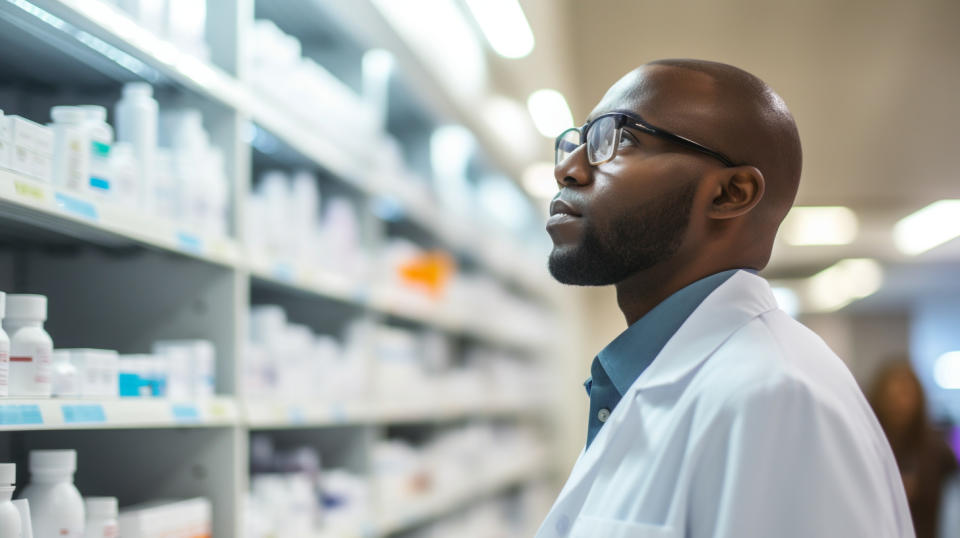Recursion Pharmaceuticals, Inc. (NASDAQ:RXRX) Q4 2023 Earnings Call Transcript
Recursion Pharmaceuticals, Inc. (NASDAQ:RXRX) Q4 2023 Earnings Call Transcript February 27, 2024
Recursion Pharmaceuticals, Inc. isn’t one of the 30 most popular stocks among hedge funds at the end of the third quarter (see the details here).
Chris Gibson: Hi, everybody. I’m Chris Gibson, Co-Founder and CEO of Recursion, and I am really excited to welcome you to our first ever Learnings Call here at Recursion. So what is a learnings call and why are we starting this practice now? A traditional learnings call has a lot of value, but over the years I think these have become extraordinarily scripted, frankly quite boring in many cases and hard to access for all of the stakeholders that we want to be able to speak to. Learnings is our interpretation of a traditional earnings call, which we feel is more authentic, so I will not be scripted today, I’ll just be working off of the slides in front of me, adaptive and we hope easy to access. And please, if you have suggestions on how we can make this better going forward, please send them our way.
What I would also say is that, we’ve chosen to initiate our first learnings call at this moment, at the start of 2024, because as we look ahead at the future of Recursion, the milestones and catalysts coming before us are going to be coming fast and furious, and we want to make sure that we have a robust mechanism to reach out to all of our stakeholders on a quarterly cadence, and to be able to share all the incredible work that we’re doing here at Recursion with you. So to frame where we are today, where we’ve been and where we’re going, I want to start by going back really a decade, going back to the origins of TechBio, one decade ago. And it was a really interesting time in the early 2010s. You saw technology companies coming into a wide variety of industries and leveraging a pretty straightforward playbook to bring fundamental new advances from how we get around cities, to how we think about our preferences for digital media, to how we even think about what products we want to order.

And what these companies did was quite straightforward. They used technology to capture high dimensional data to create a digital record of reality. And it’s important to note that the data that they collected was rich, very, very rich and high dimensional. They aggregated and digitized that data, and then leveraged algorithms to make predictions across all of these massive data sets. And most important of all, they went back into the real world to test those predictions. So whether that’s telling you to turn left instead of right, whether it’s telling you to buy product A instead of product B or to watch TV show X or Y, these algorithms could be tested in their ability to predict the right outcome in a real setting. But in biology, this has been extraordinarily challenging.
There are so many roadblocks to aggregating and generating the right data to be able to map and navigate this complex system of biology and chemistry. There are three primary drivers of that. First, this world is very analog standard. It was more so in the 2010s, but it still is in some ways today. There are still CROs who send you scanned PDFs or printouts with handwritten notes. And in the biopharma industry, there’s a tremendous amount of data, hundreds of petabytes of data, but that data was collected in a way that wasn’t built for the purpose of machine learning. And so it’s often siloed on legacy servers, it’s often built without the right kind of high dimensional nature or the right kind of metadata to make it easier to extract the connections across and between all of those different data.
And then of course, there’s the public datasets that we and others use. But as you all know, there’s a reproducibility crisis, and there are real challenges, because just like in the pharma data, there’s not enough metadata and not enough relatability of this data across all these different publications and data sources. And so it’s very, very challenging in the biopharma industry to aggregate and generate the right data. But what we and other companies who are today leading TechBio saw in the early 2010s was an opportunity. We saw exponential improvements across five main areas. The first was the cost of storage. So in the early 2010s, we were at the end of a 40-year cycle of precipitous decreases in the cost of storage. And this is important because a company like us at Recursion today with over 50 petabytes of proprietary data has to be able to pay to store all of that data.
See also Top 20 Most Valuable Tobacco Companies in the World and 15 Countries with Most Breast Implants in the World.
To continue reading the Q&A session, please click here.
